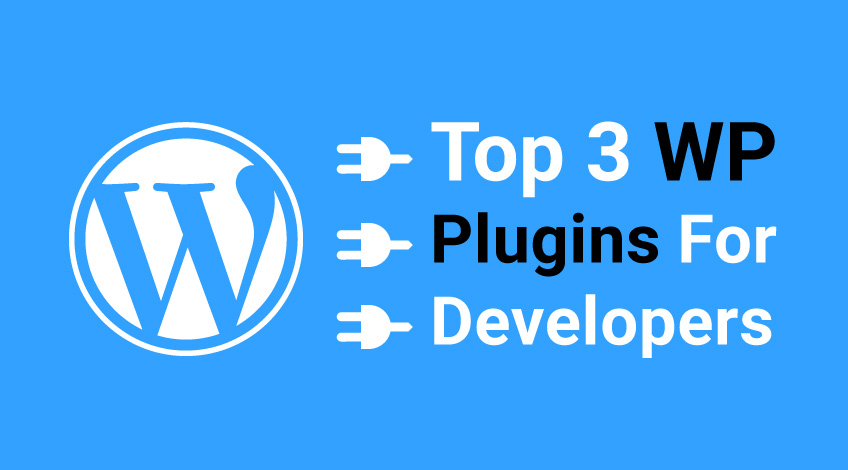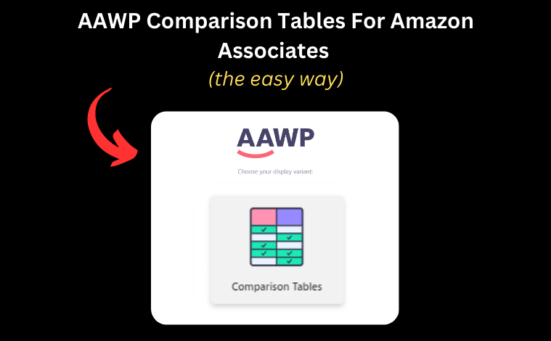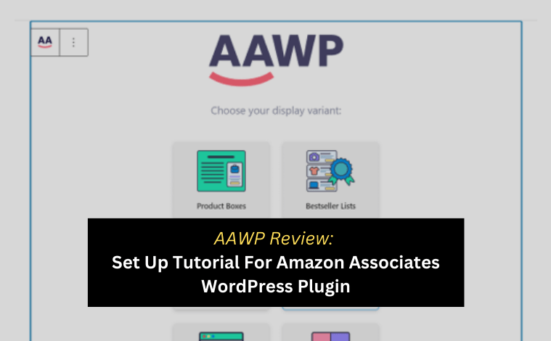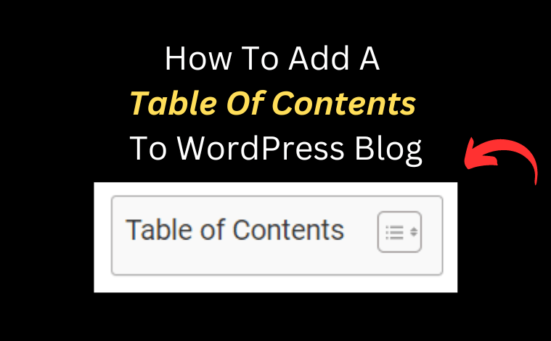
I’ve always hated WordPress sites built using loads of plugins.
I worked for a few smaller agencies when I was first starting out, who would get a freelancer to build them websites on the cheap using plugins and premium themes.
These freelancers may not have been proper WordPress developers, but they could build a website in WordPress that looked and functioned good on the front end.
So what’s the problem?
Well, whenever these sites needed updating it was a total nightmare.
WordPress seemed SO complicated.
- You had widgets for this
- Plugins for that
- Shortcodes for all kinds of things
- HTML all over the WYSIWYG
- And nothing seemed to be editable though the actual page itself.
The clients would constantly break their websites when trying to update them.
(hell, I’d even break them… and I was suppose to know what I was doing!)
At that time I was still learning WordPress, and although I could see massive value in using WordPress to build websites in…
I didn’t want to build sites like that.
I always wanted to make my sites better…but I didn’t know how to go about it.
And I never had anyone to teach me the best way of doing things – so the majority of my web design career has been trial and error.
That is, up until the last few years.
And in some ways I am glad it took so much effort to get where I am now.
But it does means it took me waaaaaaay longer to get there than it needed to, if I had someone showing me the way.
And that’s the whole point of this site. And this article.
Some plugins solve a problem quick, but make the site a nightmare to manage….
These 3 plugins take your WordPress sites from good…
…to flipping amazing.
Not only in terms of management for clients, but overall performance and value of your work.
And you don’t only need to take my word for it. Clients absolutely love it when they can actually manage their website themselves, and they’re always keen to let you know.
Which does make you feel good about the work you’re doing.
But if that ain’t enough to convince you, here are some of the other benefits you’ll see when making your websites easier to manger for clients:
- Relationships with clients are improved because you’re producing truly amazing work and constantly over delivering (without ever working for free).
- Clients that understand a bit about the web are blown away by how simple it is to accomplish (seemingly) difficult tasks.
- People start to talk about your services and how much better you are than the previous website guys they had in.
Now two of these plugins aren’t free to use.
They’re a one off payment.
But I cannot stress enough how important it is to invest in your web design career.
Not only can you make the money back by potentially using one of these as a monthly service…
But you will be able to demand more for the work you are doing.
Because when the value of your product goes up, so too does the price you can demand.
Let me tell you about my mate…
I’ve got a friend of mine, a freelance WordPress developer. He’s a great designer and probably knows more about WordPress than most others in the industry.
But he constantly struggles to keep clients and good relationships with agencies.
Because he isn’t the fastest developer, and his websites aren’t so easy to manage.
And I’m always telling him, “just spend the money it’s a one off…save a few quid every day until you can afford it and you’ll make it back in literally weeks, because your clients will want more work done, they’ll tell other business owners and so on”.
It’s seems so obvious to me – when you do great work, people will do business with you again.
It’s an age old method of doing business.
But he’s adamant that he can’t afford it.
And it’s a shame because he’s my friend and I hate seeing people get stuck like that.
Not moving forward…
With a problem that is so easily solved…
All because he doesn’t understand the value of investing in himself.
And if you believe that too then this isn’t for you.
But if you want to speed up your development, impress the hell out of your clients and make more money, then defiantly read on.
Here are my top 3 WordPress plugins that I use on every single project to this day, without fail.
1. Yoast SEO
Yoast is a very popular plugin in the WordPress world – as a matter of fact it’s one of the main reasons I believe WordPress is such a popular CMS.
Yoast is a super comprehensive SEO plugin that makes on-site SEO really easy for anybody that knows something about SEO.
We all know WordPress on its own is a great system to develop in if SEO is important to the project.
Yoast SEO takes it from great and makes it AMAZING
What’s even better is Yoast SEO is 100% free to use.
There is a pro version, but I am yet to require anything outside of the free version.
What’s so amazing about Yoast SEO?
I’ve been using Yoast SEO for years and it still never fails to impress me.
There’s some really great advanced features that I might talk about in the future.
Like how you can create templates for the meta descriptions for example – which I have found REALLY useful a lot of times.
But some of the more common things that I use Yoast SEO for are:
- Keyword insights
Yoast SEO will let you know how many times your chosen “focus keyword” has appeared in your copy, whether it appears in your title tag or not. If it is in your meta description and so on. All to give you the best chance of ranking well in Google. - Sitemaps
The Yoast SEO sitemap is automatically updated whenever you make a change to the website. So if you add a new post, for example, Yoast SEO will automatically add it to the sitemap. You can easily choose what to include and exclude from your sitemap too. Simply submit your sitemap to webmaster tools and Yoast SEO will do the rest for you. - Technical SEO at a click
Forget about: permalinks, .htaccess and robots.txt because Yoast SEO takes care of all of that for you. - Breadcrumbs
I used to use another plugin for this until I realised Yoast SEO’s breadcrumbs are way better. The breadcrumbs even contain the Google rich snippet code, which allow your breadcrumbs to show in the SERPs.
This is as good as it gets and it’s really useful to have all your SEO taken care of in one place. - Readability checker
Yoast SEO will analyse your content using the Flesch Reading Ease score to help give you the best chance of ranking well and engaging visitors. - Preventing duplicate content
Yoast SEO will set a canonical tag on your websites pages which is a great way to improve SEO as it tells Google which version of the page is the one you want to show in the SERPs.
I have tried a few other SEO plugins for WordPress (and Joomla) and I can defiantly say that as of this moment Yoast SEO is the best one of the lot.
2. Advanced Custom Fields Pro
One of my main problems I had with WordPress when I was first starting out is that if your design has multiple areas that content needs to go in, you’re kinda stuck.
For example, if your website is designed like this:

You’ve got 3 columns at the top, and the main content at the bottom.
But you’ve only got one WYSIWYG area.
So either you:
- Place loads of HTML inside the WYSIWYG area – making it hard for clients to manage.
- Or you use a load of widgets, which means that the page isn’t managed by clicking “edit page” and you have to search all around the backend of WordPress.
Both of which flipping sucks!
What ACF pro allows you to do is include multiple WYSIWYG areas.
Allowing you to include a WYSIWYG for each place in your design that it’s needed.
Meaning the entire page is managed through one place in the WordPress backend!
And that alone should be enough to make you realise you need to start using this, but the benefits of ACF Pro go way beyond just multiple WYSIWYGs.
The plugin is called “Advanced Custom Fields” meaning that you have different types of fields (some of which are rather advanced).
Some of the ones I use most commonly are:
- Repeater fields
The repeater field allows you to create “sub fields” which can be repeated as many times as the client wants at the click of a button.
These sub fields can include any of the fields listed below and are great for: our team pages, advanced sliders, product lists and so on. They can be pretty hard to get your head around at first but well worth it once you do, literally every site I build in WordPress uses repeater fields now days. - Gallery fields
Super easy for clients to manage and ideal for image sliders and thumbnail galleries - Input fields
Great for simple lines of text (and preventing clients from screwing up the site) - True/False
Can be very powerful when used creatively but a simple example would be a true/false on whether or not an element is highlighted. - File upload
Great for pages that have downloads on. - WYSIWYG
Perfect if you have more than one content area. - Textareas
Ideal for areas you don’t really want clients putting images and heading tags in (for their own good of course) - Page links
Great for call to action areas.
Now, if you haven’t been using ACF Pro in your WordPress development, imagine the possibilities when you start!
This is my number one go to tool when developing in WordPress. I’ve built some truly great systems using this and guess what – my clients absolutely love it.
The fields are created in the WordPress admin and output by simply echoing “the_field” in your theme files.
There is a free version of ACF which isn’t as comprehensive that you can try out, but take my word for it – get pro, you will not regret it.
The advanced featured pro has will seriously transform your websites from good to amazing. And it is really inexpensive when you realise how much more value you can provide with this one off payment.
Note: ACF Pro very much a developer plugin meaning you will have to have a working knowledge of PHP, but to be honest, if you haven’t – it’s not that hard to pick up.
3. BackupBuddy
When I first started in WordPress development I got a lot of stuff wrong.
And I’m the first to admit that.
I really couldn’t see the point of backing sites up (sounds stupid now, dont it?)
And I used to think that people who offer backup services were kinda ripping their clients off.
“Once your website is built there is no need for any monthly work to be done”
“They’re built well, they’re on WordPress so it’s all secure” I thought.
I had never had any WordPress website I had built or worked on get hacked or anything else people talk about with server crashes etc.
Until it did happen. And it happened badly!
Let me tell you the story…
A fairly big client for an agency I worked for asked for some general updates to be done to their WordPress website. I had a look at it and it was built using a premium theme and a load of plugins.
I took the job because I needed the money (but little did I know what I was getting myself into)
I made the updates, it was a lot of searching around but I’d worked on sites built like that before and the changes wasn’t over complicated, just changing some images and text.
The owner of the company didn’t want any of their staff to touch it with barge pole, because they’d messed up their website before.
Anyway, I sent it over to the agency, they told the client – everyone was happy.
That was until about a week later when I get an email come through from the agency,
“DAN – WEBSITE DOWN, HELP”
With no money, and only one agency paying me for work – you can imagine…
It felt like my heart dropped into my stomach.
I rushed onto the website to see if it was a mistake, but no. The website was down…
“What the hell did I do to cause this” I thought?
I rushed into Filezilla to check to see if the files were still there and luckily (or so I thought) they was, but the hosting company had changed the folder name from “public_html” to something like “public_html_your_domain_has_been_compromised____please_contact_support”.
I had no idea what to expect, but I went straight onto their live support to see what was going on.
The customer support team told me that the site had been compromised and needed to be rebuilt.
They couldn’t tell me what was wrong, or what happened, but it defiantly wasn’t anything to do with them – they knew that for sure.
I was fuming!
I had been assured by the agency that no one else had touched the site – and so I was pretty much to blame.
Although when I started going through the files in Filezilla, I started to notice that files had been changed the day before.
There was some sort of redirect going on for starters and a lot of the core WordPress files had been compressed.
It all seemed rather odd…and I never did get to the bottom of what happened that day.
– Maybe it was the hosting company – they are notoriously bad
– Maybe the agency got someone else to work on the site
– Maybe the site got hacked, which is pretty likely I suppose.
Well whatever it was, the one thing I did know is I NEVER want to feel that amount of stress again.
From then on I started to manually backup all the websites that I build and most of the websites that I work on – before and after updates are made.
I say most because I hated doing it.
It was hard to do, boring and difficult to justify spending an hour or so backing up a website for seemingly no reward.
It wasn’t until I started freelancing for a really good company in America that I realised I needed a quicker solution.
I had built a membership site for them in WordPress and was super proud of it.
They’re great people and I got concerned one day about the security of the website when another freelancer started taking the sites down.
He wasn’t happy about something that happened in the company and was striking out.
Anyway I started looking about online for the best backup plugins and saw a few different ones with mixed reviews.
I needed something I could install into WordPress, click a button and have everything I need.
The only one that had consistent positive reviews was BackupBuddy.
It looked familiar because I had seen it on a few other websites I had worked on in the past, it’s defiantly the most popular backup plugin for WordPress among developers.
After a lot of umming and ahhing it become clear that my best bet was BackupBuddy.
And after almost two years of using it on a weekly basis I can tell you exactly why…
Reason 1: BackupBuddy makes backups SUPER easy
There’s no messing around with BackupBuddy, it’s so easy to use.
You simply install the plugin, verify your account and you’re ready to start taking backups.
You don’t have to do any of the hard work you would taking manual backups.
- No exporting databases
- No downloading thousands of files
You simply click a button and it downloads everything into a zipped folder (or just the database if that’s what you’re into).
Reason 2: Easily move WordPress websites hosting
Manually moving a WordPress site isn’t fun.
It’s certainly not as hard as I once thought it was, but it’s not an easy task by any means.
The amount of forum threads I have started over the years asking for help is beyond a joke.
Sure, I could manually move a WordPress site, but why bother?
I tell you what, even when money was super tight for me, if I knew how much time, energy and stress I could have saved by just using BackupBuddy to migrate servers…
I would have bought it years ago!
With BackupBuddy it is so easy, anyone can do it in about 10 minutes.
Reason 3: BackupBuddy can run automated backups
This was one of the main things BackupBuddy offers that swayed me in the end.
I love automating work.
Because the less time I spend doing repetitive jobs that could be automated, the more time I can spend on my clients projects.
What BackupBuddy allows you to do is set a schedule for when the backups will run and where they will be downloaded to.
This means you can set your website to backup every month and automatically be stored on:
- Dropbox
- Google Drive
- Amazon Drive
- BackupBuddy stash (you get 1gb free with this, which sounds good but I’ve never used it)
- And more…
And what’s better is there’s no monthly cost for this – it’s all included in your lifetime license.
It’s also very easy to set up.
Reason 4: Customer support is BRILLIANT
This is quite an important one because there will likely be some teething issues with any new plugin you use.
And these guys are constantly brilliant.
They’re usually:
- Very prompt (usually replying the same day)
- Very knowledgeable (I’ve never had an unresolved issue)
- Very friendly (unlike the hosting company I mentioned earlier, these guys go the extra mile)
Reason 5: Restore specific files from a backup, or the whole site
Made a mistake on a theme file? Lost the original version? No worries, BackupBuddy can restore the file from the previous backup with ease.
This really came in handy last year when a colleague done just that.
He was panicking, freaking out.
I just went into backupBuddy and clicked “restore”.
It’s these stress avoiding scenarios that really make BackupBuddy worth every penny to me.
Reason 6: You can charge clients a monthly service using BackupBuddy
If you’re not offering backups as a service to your clients, you can start as soon as you get BackupBuddy.
The web design agency I currently work for offer a monthly maintenance package to all clients.
The service goes as follows:
- Complete website backup
- Update the WordPress
- Update all plugins
- Test website still works
- Complete website backup
It’s great for clients as they are getting a good service.
And great for you because you’re getting return work.
You can still offer this service without BackupBuddy, but the added time it will take to backup the website manually (twice) will make clients a lot less likely to go for it.
Using BackupBuddy makes this a lot easier and quicker.
Don’t sleep on this one like I did
Like most issues in life, losing an entire website is a very avoidable problem.
I wish I had someone sit me down and tell me this stuff back when I was starting out.
Web Design as a career can be stressful, so you must do your utmost to avoid it wherever possible.
And for a one off payment, you get a lifetime license that you can use on every website you build from here on out.
It’s a no-brainer.
The simple fact is this…
If you haven’t had a site go down yet, it’s only a matter of time.
Hope you enjoyed the post.
Dan.



